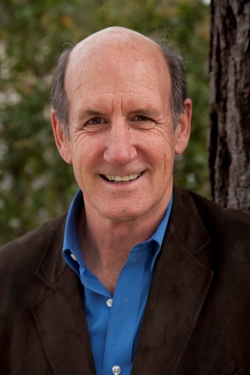

Complementary and Alternative Medicine (CAM)

Complementary and Alternative Medicine (CAM)
Mindfulness Meditation: Tools for Health, Healing, and Well-Being
Approaches to health, healing, and meditation too often begin by first addressing what’s wrong, then progressing towards establishing a beachhead of health, wholeness, and well-being, which are then considered fragile and changeable qualities in need of constant attention in order to keep them intact.
The iRest Meditation approach offers a decidedly different methodology. It starts with the assertion that wholeness, and its essential qualities, which include health and well-being, exists innately within us, and should be experienced from the outset of one’s journey, not as something to be attained down the road.
The underlying principle behind iRest asserts that our intrinsic wholeness is incapable of being hurt or harmed, is never in need of healing, and is unchanging, ever-present, and indestructible. iRest emphasizes—from the outset—that while health issues need to be addressed in the body and mind, the core essence of each of us always remains whole and healthy and never in need of healing. It just needs to be recognized, embodied, and remembered.
Your Birthright of Wholeness
When we don’t recognize our basic wholeness, we will always feel that something’s amiss in our lives. This feeling arises to help us orient to and re-embody the wholeness that we have forgotten. iRest practices are designed to reveal and enable you to recognize your basic wholeness, which is ever-present and is your birthright of intrinsic health, no matter the state of your body and mind. Wholeness is something that you are innately and is never in need of healing, fixing, or changing—just simply recognizing.
From this perspective, we are not living or engaging in healing practices or meditation to become whole. We are practicing and meditating from our innate and already present wholeness. We just need to know how to recognize and embody our wholeness. With this understanding and realization firmly in place, we can then learn to interweave our wholeness into every circumstance of daily life, as well as when we address what is in need of healing in the body and mind.
True Health
In order to experience true health and wholeness, we must be able to embrace two perspectives. We need to experience ourself as a unique, separate, authentic individual who is willing to be seen and heard. And we need to feel how we are interconnected with everyone and everything around us, as a not-separate facet of the diamond of wholeness that underlies the entire cosmos. When we are able to accept and embody these two perspectives, we will experience ourselves as unique expressions of the underlying essence of wholeness that has given birth to our self, others, and the entire universe. We are already whole and interconnected. This is our innate inheritance by birth. We just need to understand, recognize, and embody this realization.
In the words of Albert Einstein:
“As a human being we are part of the whole, called by us ‘universe,’ a part that feels limited in time and space. We experience our self, our thoughts and feelings, as something separate from the rest—which is a kind of optical delusion of consciousness. This delusion is a prison for us, restricting us to our personal desires and to affection for a few persons nearest to us. Our task is to free ourselves from this prison by widening our circle of compassion to embrace all living creatures and the whole of nature in its beauty.”
The Myth of Separation
Before the age of 18 months we all swim in a sea of undifferentiated being and wholeness, where we experience ourselves as undulating waves of sensation, emotion and sensory perceptions, but without the cognitive awareness of being a separate self. Then, around 18 months, cognitive structures in our brain come online to give us the felt-sense of being a separate ego-I-self. We begin embodying an egocentric perspective that entails experiencing ourselves as unique, moving through life amongst other separate and unique individuals.
Unfortunately, as our sense of separation develops, which our family, culture, and life experiences reinforce, our undifferentiated sense of wholeness gets relegated to the background. And the more we lose touch with our innate sense of wholeness, the more we feel within ourselves that “Something’s not right.” As our egocentric belief in being a separate self grows in strength, our ego-I-self function identifies with this feeling and interprets it as, “Something’s not right with me.” Identification and fusion with this belief throws us into a state of inner turmoil, which can lead us to experience feelings of confusion, anxiety, isolation, alienation, shame, and/or depression. But this belief can also serve as a pointer to its source, that can help us recognize and re-embody our underlying essence-wholeness. For now, as adults, we have the cognitive resources available to recognize, understand, and re-embody our intrinsic indestructible wholeness and well-being—cognitive resources that weren’t available to us when we were infants.
Recognizing and embodying our essential wholeness enables us to thrive in our lives with unshakable and unbreakable feelings of equanimity, peace, and warm-hearted compassion and kindness. Knowing and living from our wholeness proves us with a firm inner ground of value, meaning, purpose, and indestructible feeling of well-being and health that we carry within us wherever we are, whomever we're with, whatever our circumstances.
You can recover your underlying wholeness through first experiencing the simple feeling of being, which is the universal felt-sense and non-verbal inner knowing that we all have within us. Being is the quiet, ever-present background presence that’s always within you, but that can go unnoticed until it’s directly pointed out. There are five simple pointers—messengers—that are natural visceral feelings within you, which can help you recognize and embody your essential wholeness as you inquire into your basic feeling of being. When you embody your wholeness, you realize the ever-present, unchanging, and indestructible inner resource that enables you to weather every challenging circumstance that life brings to your table.
What follows is a simple practice of self-inquiry that can help you recognize your innate wholeness, which is a portal to the inner resources of well-being, joy, equanimity, health, and wholeness that reside within you. They can now be embodied amidst the ins and outs of your daily life, wherever you are, whomever you’re with, whatever your circumstance.
Five Inquiries for Reclaiming Your Wholeness
As you move through the following practice, take all the time you need with each inquiry before moving on to the next one, so that you can fully absorb the insights that come, as you dive ever more deeply into experiencing your undivided wholeness and essential well-being.
Rest in a comfortable standing, sitting, or lying down position. Open your senses to your surroundings—the feeling of the environment around you, sounds that are present, the touch of air on your skin, the sensations of your body touching the surfaces that are providing support.
Set attention free to wander about your body, welcoming and being with the various sensations, emotions and thoughts that are calling attention to them.
Now, to help you settle and be open to self-inquiry, take a few minutes to welcome sensations throughout your body, starting by bringing attention to the hinges of your jaw . . . the sensation of the lower jaws, gums, and teeth . . . upper jaw, gums and teeth . . . sensation of the mouth and tongue . . . skin of the face . . . the touch of breath as air enters and leaves the nostrils . . . sensation all around and back behind the eyes . . . the touch of air and sensations of coolness on the forehead . . . scalp . . . back of the head and neck.
Rest attention in the shoulders. Welcome natural sensations of heaviness, or lightness, in the shoulders, arms, hands and fingers, welcoming the sensation of both hands, arms, and shoulders at the same time.
Welcome the sensations as the chest and belly gentle rise and release as breath comes in and goes out.
Allow attention to explore and welcome sensations throughout the torso, pelvis, hips, legs, and feet. Welcome natural sensations of heaviness or lightness in the toes, feet, legs, hips, pelvis and torso . . . hands, arms and shoulders . . . neck, head, and face.
Welcome the body now, as a unified field of sensation, feeling the natural pulse or throbbing of the underlying life force that’s animating every atom, molecule, and cell throughout the body.
And welcome and ease into the feeling of simply being, luxuriating in this moment of simply being with nothing to do and nowhere to be . . . letting go of thoughts and thinking . . . thoughts like butterflies that fly about as you settle ever-more deeply into simply being . . . becoming more and more absorbed, not just in, but as, the felt-sense of being.
From your felt-sense of being, listen to the following five inquiries, sensing answers to each inquiry from your first-hand experience as being.
- While feeling and experiencing yourself as being, when you're simply being, how would you describe your location in space as being? Where is your innermost center and outermost periphery as being? When you're simply being, do you have a distinct center, border or boundary? Can you feel how, as being, you are a field of sensation that is everywhere and nowhere specific, yet an undeniable presence that feels both tangibly and intangibly present?
- When you're simply being, without going into thinking or memory, what's happening to your thinking mind and your experience of time? Can you feel how the thinking mind settles down and you step out of time the more you become absorbed in being?
- When you're just being, as being is there anything that you need to acquire that will make you any better or more perfect than you already are as being? As being do you lack, need, or want for anything? Can you feel as being, you are beyond lack, need, and want, perfect and harmonious just as you are, as being?
- When you’re simply being, as being, is your felt-sense of being unfamiliar, or can you recognize that being as something you've always known although may have forgotten at times? And as being, is there anything you need that would make you feel any more connected to being than you already are as being except to continue feeling this underlying essence of being? Can you feel how being is familiar and easily recognizable? Take a few moments now to feel where and how you recognize this felt-sense of being…
- When you're simply being is there anything you need to do that by accomplishing it would make you, as being, any better or more complete than you already are as being? Can you feel how, as you settle into being, you are complete and whole, just as you are? How being has never been hurt, harmed, or been in need of healing? How being doesn’t need to be fixed, changed, or healed? How, as being, you are already whole and healthy, just as you are as being, even as your body and mind may be in need of attention and healing?
Take time now to simply be, feeling how, as being, you are outside of space, time and lack, perfect, harmonious, complete and whole, just as you are, as being. As you rest back and become absorbed as being, as the thinking mind subsides, notice how being gives rise to a variety of qualities such as peace, ease, equanimity, love, compassion, and well-being. These qualities naturally arise as you abide as being. And you may notice, over time, as you take regular times in your daily life to simply be, how these qualities arise independent of your circumstances. These are innate qualities of your inherent unqualified felt-sense of being that you will come to realize are unshakable, indestructible, always readily available . . . wherever you are, whomever you’re with, whatever your circumstances.
When you are ready to return to your eyes-open state of consciousness, do take time, before moving about, to open and close your eyes several times while continuing to feel, nourish, and reinforce this simple feeling of being, so that you bring it back with you as you renter your daily life.
When you are ready to move about, take a few moments to set your intention to remember and nourish your felt-sense of being, little and often, all day long.
Then welcome anew the sensations where your body is touching the surfaces that are providing support . . . the touch of air on your skin . . . the environment and sounds around you . . . the light, color, and texture of the objects around you—all the while continuing to experience your inherent feelings of being and wholeness.
Then, as you are ready, come back to feeling yourself fully alert, with your eyes open, feeling refreshed and present in this moment . . . moving back into your daily life accompanied by the underlying felt-sense of being and wholeness as you move back out into the world . . . feeling spacious, timeless, connected, complete, and whole, just as you are, as being amidst the daily affairs of your life.
REFERENCES
 Richard C. Miller, PhD, clinical psychologist, author, researcher, yogic scholar and spiritual teacher has been, since 1970, integrating Western psychology and neuroscience with the ancient nondual wisdom teachings of Yoga, Advaita, Taoism, Buddhism, and Judeo-Christian perspectives. Richard is the founding president of the iRest Institute, co-founder of the International Association of Yoga Therapists, and founding past president of the Institute for Spirituality and Psychology.
Richard C. Miller, PhD, clinical psychologist, author, researcher, yogic scholar and spiritual teacher has been, since 1970, integrating Western psychology and neuroscience with the ancient nondual wisdom teachings of Yoga, Advaita, Taoism, Buddhism, and Judeo-Christian perspectives. Richard is the founding president of the iRest Institute, co-founder of the International Association of Yoga Therapists, and founding past president of the Institute for Spirituality and Psychology.
Author of iRest Meditation: Restorative Practices for Health, Healing and Well Being, The iRest Program for Healing PTSD, and Yoga Nidra: The Meditative Heart of Yoga, Richard serves as a research consultant studying the meditation protocol he’s developed (Integrative Restoration ~ iRest Meditation), a modern adaptation of the ancient nondual practice of yogic meditation, researching its efficacy on health, healing, and well-being with diverse populations including active-duty soldiers, veterans, women rescued from human trafficking, youth and college students, seniors, the homeless and the incarcerated, with issues such as sleep disorders, PTSD, TBI, chronic pain, chemical dependency and anxiety, as well as research on iRest’s efficacy for enhancing resiliency, well-being, love, and compassion. Richard leads international trainings and meditation retreats on the integration of enlightened living into daily life. For information visit www.irest.org.


 By
By






